Americans have always adapted to shortages of essential goods. Whether it’s food, fuel, housing, jobs, automobiles, tires, or toilet paper, they eventually find a way to cope with the shortage.
Eventually.
The initial response, though, is often been panic buying, followed by hoarding, which leads to rationing, and, given time enough, a black market.
For most of U.S. history, serious hoarding was beyond the resources of average Americans. Often leading subsistence lives, they lacked the money or opportunity to stockpile limited supplies. Manufacturers, wholesalers and retailers, though, could — and often did — accumulate scarce products to drive up their prices.
In colonial times, food shortages frequently accompanied poor harvests, particularly in urban areas that had little access to produce. As early as 1710, requisitions by the British army made wheat scarce. Merchants hoarded the remaining supply to raise prices to a level that colonists couldn’t afford. This allowed them to export the wheat to more lucrative European markets. Food riots broke out in Boston three times, which led to a law prohibiting the export of wheat.
Food shortages returned during the American Revolution. Food was either blockaded by the British or requisitioned by the colonial army. Merchants often hoarded commodities like tea, coffee, sugar, and flour. Between 1776 and 1779, 30 food riots broke out in the colonies. They were frequently led by women who struggled to feed their families while their male breadwinners were off at war.
On July 24, 1777, a crowd of angry Boston women drew carts and wagons to the warehouses of merchant Thomas Boylston and demanded the keys. Boylston refused. According to Abigail Adams, “one of the women seized him by the neck and tossed him into the cart.” Realizing the women wouldn’t yield, he handed over the keys. “They tipped up the cart and discharged him, then opened the warehouse, hoisted out the coffee themselves, put it into trucks and drove off.”
During the American Civil War, southerners endured years of food shortages. Crop yields were lower with so many farmers at the front. And confederate army requisitions cleaned out all available supplies in some areas. Also, a Union naval blockade prevented imports from reaching southern ports.
Southern women were ready to sacrifice for their cause, but not when they knew hoarding merchants were driving up prices. Over the course of 14 months, mid-war, the price of a barrel of flour in Richmond rose from $20 to $250.
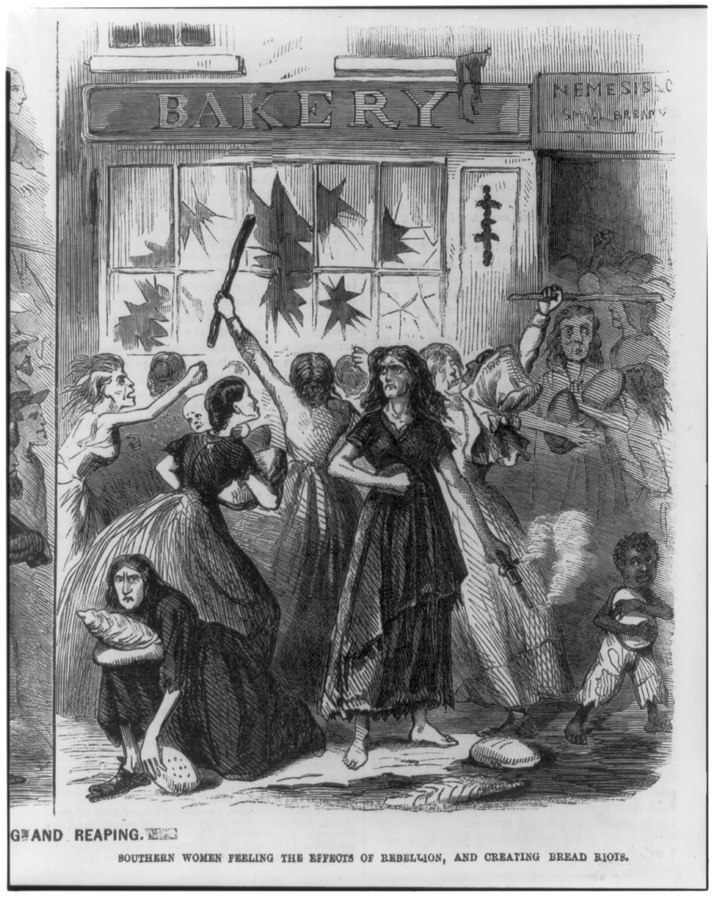
In desperation, thousands of women marched through the streets of Richmond, breaking into stores and warehouses, taking food, clothing, and whatever luxury items they could find. The mayor pleaded with them to go home, then the governor, and finally Jefferson Davis, the confederacy’s president, asked them to disperse. But it was the threat of the city battalion’s guns that finally ended the riot.
When the U.S. entered World War I in 1917, the government appealed to Americans to conserve food. It launched an aggressive campaign to plant victory gardens, avoid wasting food, and observe Meatless Tuesdays and Wheatless Wednesdays.
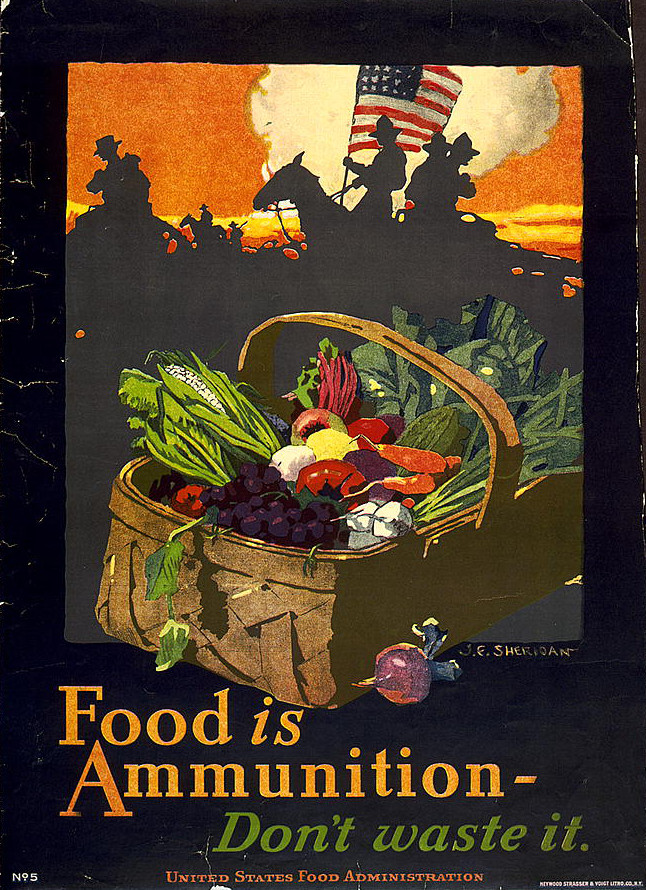
Herbert Hoover, head of the U.S. Food Administration, regulated national food supply and pricing throughout the country, buying, selling, importing, and storing essentials to prevent shortages. The government never enforced conservation among consumers, though this did not prevent some people from hoarding sugar in anticipation of shortages.
However, the Food Administration took action against hoarding producers. A 1917 article in The Country Gentleman, the Post’s sister publication, reported “The Food administration has kept a close watch on the packers of canned goods to exterminate the hoarders. This telegram, for instance, was recently sent to a packer in Maryland: ‘We are advised that you have shipped canned tomatoes to public warehouses for the purpose of hoarding and speculation. If this information proves accurate we will consider the matter of revocation of your license.’”
The next hoarding crisis came up when the stock market went down. Banks were failing after the 1929 stock market crash and depositors worried if their bank would survive. They began withdrawing their money and demanding payment in gold, which was still an option in the early 1930s. The financial markets teetered as gold began to disappear into hiding places around homes and backyards.
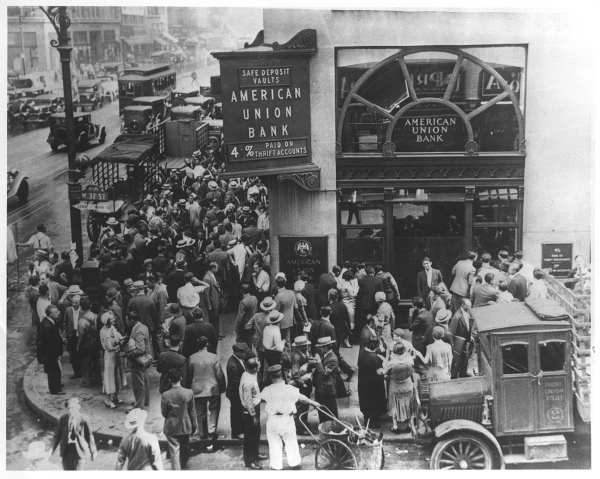
The gold-hoarding problem was addressed by President Roosevelt’s Gold Reserve Act of 1934, which required Americans to surrender all gold to the government in return for paper currency.
Meanwhile, the drought in America’s farmlands was creating another shortage. Food production dropped, and the millions of unemployed Americans (20 percent at one point) couldn’t afford to eat.
Americans responded by hoarding almost everything. They conserved food, saved scraps, and stretched out meals for days. They mended old clothes and learned to fix their radios and cars. They saved things they would previously have thought nothing of discarding: string, wrapping paper, and packing crates. Covers of old Post issues appeared on the walls of shacks for decoration and insulation. Americans became familiar with the phrase “Use it up, wear it out, make do, or do without.”
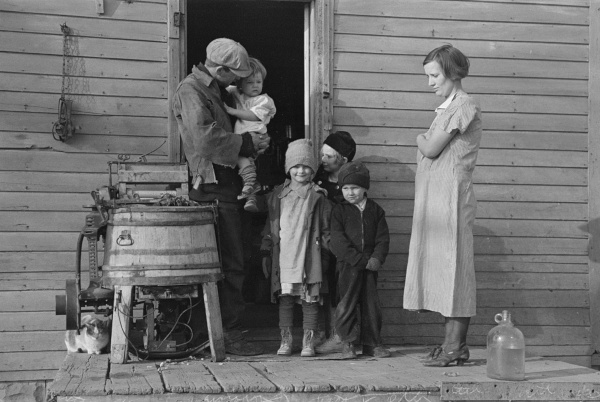
War brought a measure of prosperity back to America, but created new shortages. The government began requisitioning supplies for the military. The Office of Price Administration was given the authority to set price ceilings and ration food for consumers. In the coming months, Americans without the appropriate ration coupons couldn’t purchase sugar, coffee, meat, cheese, fats, canned milk, or gasoline.
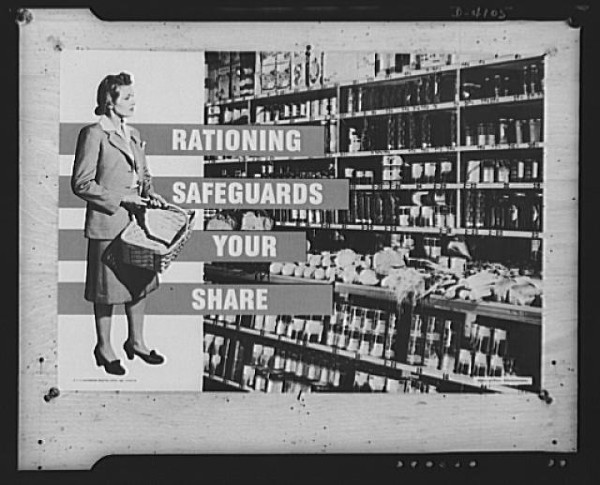
Again, there was hoarding in the food industry. Some packagers refused to sell as long as the government capped their prices. Many merchants held onto what they could, then surreptitiously sold it at highly inflated prices. A black market sprang up to sell items illegally obtained from producers or forged ration stamps.
Reporting on “America’s Black Market” in their July 25, 1942, issue, the Post said the black market arose from consumers’ demands for products and the increased money they were earning in war industries.
“It is the unsatisfied dollar of the consumer which inspires the black marketeer to take up illicit activities… This year will find the American people with $15,000,000,000 for which there are no corresponding goods and services. The dollars will keep rattling around looking for goods, pushing up prices, encouraging the bootlegger and his weak-willed customer.
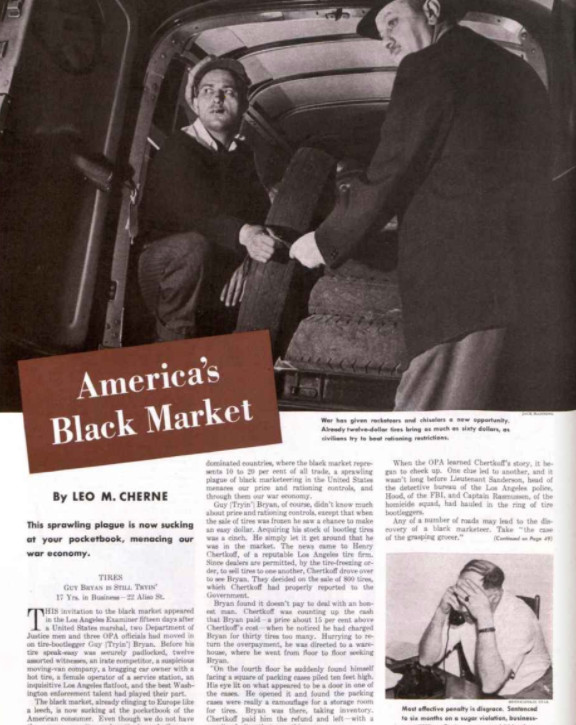
Government publicity campaigns urged Americans to conserve, to get by on their rations, and to report hoarders. Americans were glad to comply with the last request. After years of limited sugar, coffee, and meat, they were ready to report anything that looked like illegal sales or black marketeering.
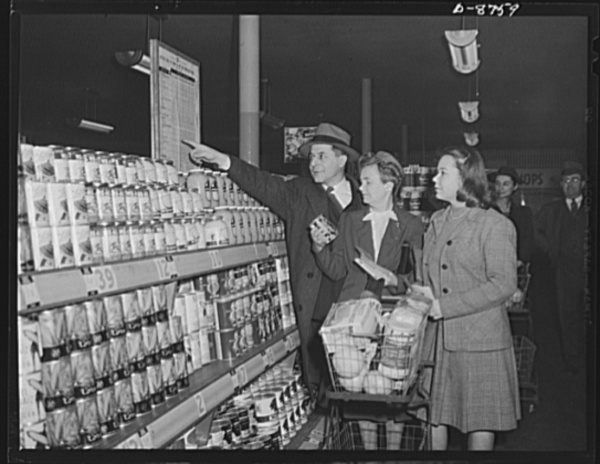
The government didn’t need to ration automobiles. They simply stopped being made in February 1942. When the war ended, motorists were eager to buy new cars. But it took longer than expected for the automakers to resume full production. Hopeful buyers put their name on a list in a show room, then went home to wait for months.
The government had put a ceiling on car prices so sales wouldn’t be limited to the wealthy. Unscrupulous car dealers could still get more than the ceiling price by accepting bribes from buyers.
One car dealer offered car buyers a special deal. He would sell them a new automobile if they also bought his dog for $600. The buyer handed over the money, drove off with the dog, and the next day the dog was returned to his original home for another sale.
Automakers also got around the price ceiling by loading the new models with lots of expensive luxury items that motorists didn’t want but had to buy.
The shortages ended, though, and America entered an era of relative prosperity and abundance. So consumers were stunned when they faced gas shortages in the 1970s. The OPEC oil embargo in ’73 and the Iranian Revolution in ’79 brought an end to the days inexpensive and plentiful fuel.
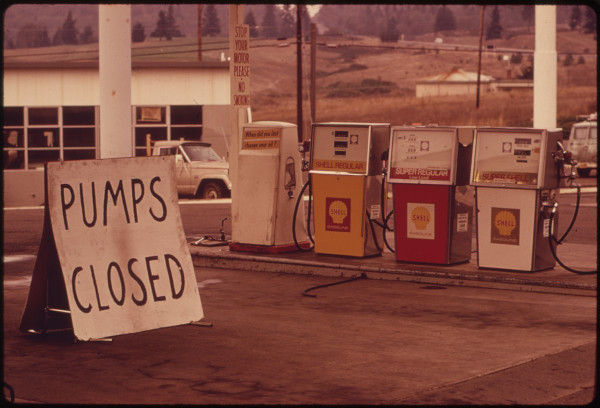
The shortage led to long lines at gas stations, fights at the gas pumps, and shots fired at gas stations by angry drivers. Car owners would arrive at their car in the morning to find their gas tank empty, their fuel siphoned out during the night.
Oil companies began hoarding oil and hiking prices. The government put limits on gas sales, and angry truck drivers rioted.
We haven’t seen such nationwide panic buying and hoarding for a long time — if you don’t count the 1983 toy store riots caused by a shortage of Cabbage Patch Dolls.
While there have recently been shortages of certain items like toilet paper and hand sanitizer, most Americans are trying act responsibly by staying at home and buying only what they need. After all, we have strong supply chains, plenty of food, and open grocery stores. The only item we lack is something Americans have always been short of: patience.
Featured image: Wikimedia Commons
Become a Saturday Evening Post member and enjoy unlimited access. Subscribe now
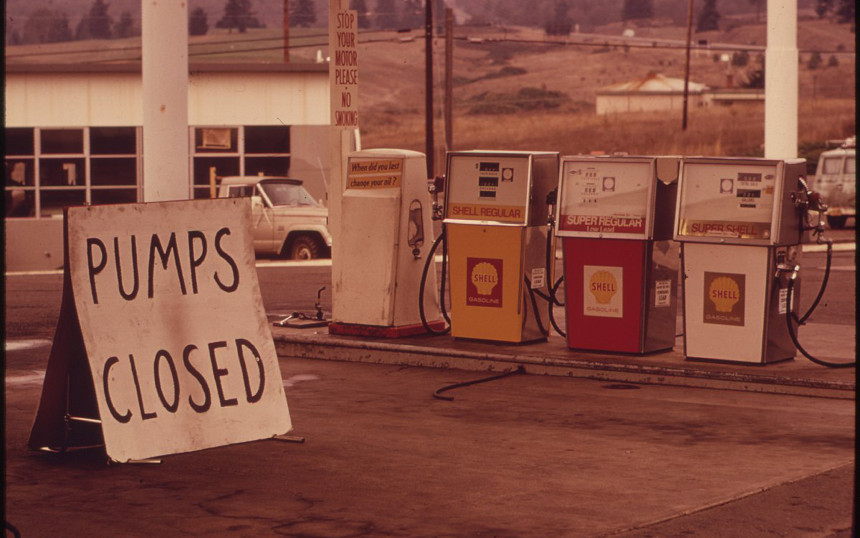


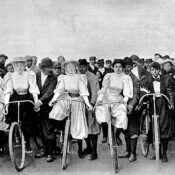
Comments
“we have strong supply chains”
this aged like milk.
Seriously????? Americans at every level are selfish, self indulgent and impatient. Just go to any chain store!!!
But the BIG PICTURE is what is important here. If you let the libs take over this country, you will ALL esperience what a shortage really is. Socialism,spiced with Communistic style rules/demands/loss of rights will throw this country back 100 years or more. Think some of your rights are being squelched now???? Think liberal judges are on your side??? Just wait.
Get off your dead butts and DEMAND all your rights. Sue the hell out of all these libs and their orgs. who are stamping out your rights and AMERICA. Do something worth while and stop being so damn lazy and selfish.